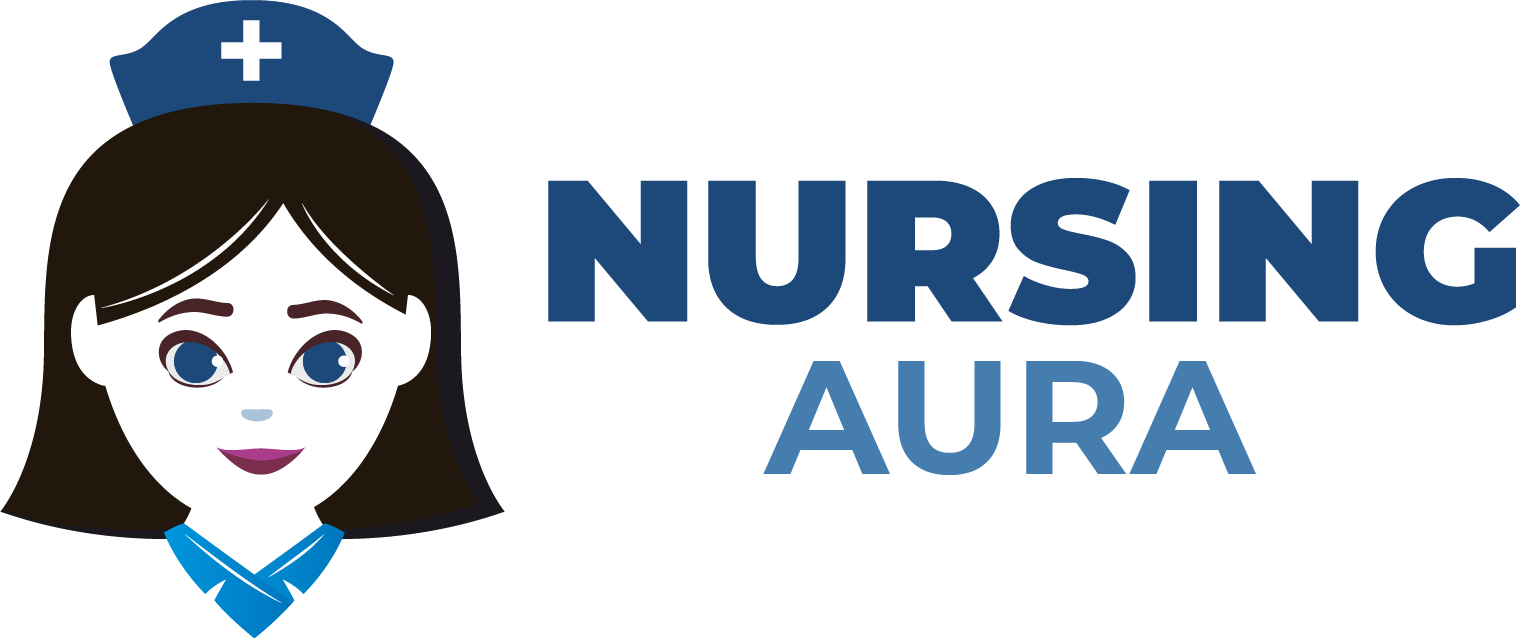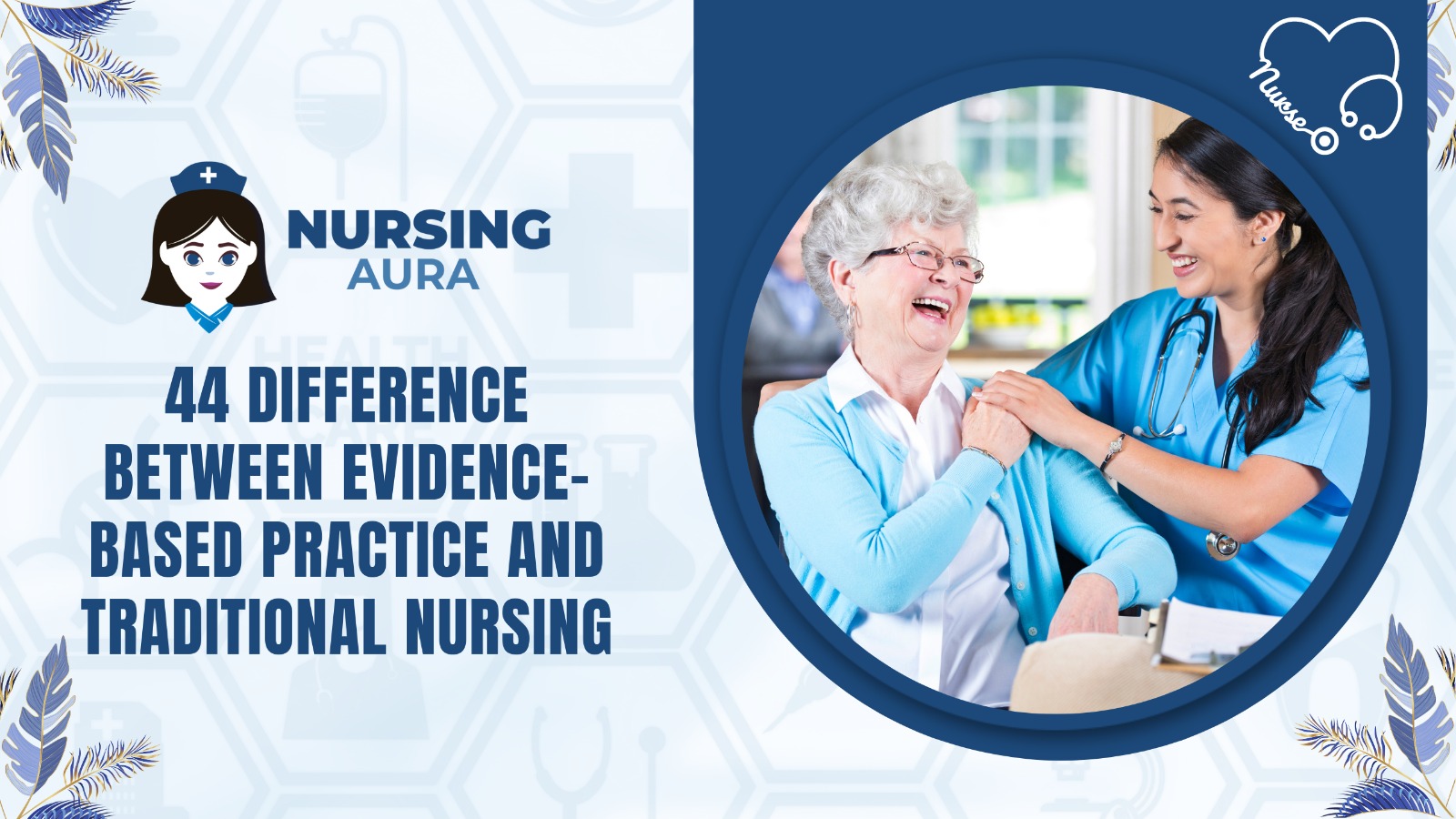Evidence-Based Practice (EBP) and Traditional Nursing are two healthcare delivery methods with different ideologies. Modern healthcare uses the finest data, professional competence, and patient values and preferences to drive clinical decision-making. Traditional nursing, albeit still popular, relies on rituals, norms, and healthcare workers’ expertise.
A fundamental difference between EBP and Traditional Nursing is decision-making. EBP practitioners constantly examine and analyze the evidence to ensure their interventions are current. Traditional nursing, on the other hand, focuses on established practices and routines that may not be backed by data.
Clinical expertise is another distinction. EBP encourages clinicians to use clinical skills and evidence since expert judgment is essential to high-quality treatment. Traditional nursing emphasizes professionals’ expertise and intuition above evidence-based conclusions. While experienced nurses can provide significant insights, depending heavily on them might perpetuate outmoded practices. Traditional nursing may rely more on protocols and processes than patient input. EBP combines the finest data, professional expertise, and patient values to treat best. Traditional nursing, while still common, relies on established procedures and healthcare experts, which may restrict patient care’s flexibility and efficacy.
| S. No. | Aspects | Evidence-Based Practice (EBP) | Traditional Nursing |
| 1 | Definition | Integrates best available evidence with clinical expertise and patient preferences in decision-making | Relies on past practices, personal experience, and authority figures for decision-making |
| 2 | Decision-Making | Involves critical analysis of research findings to guide decisions | Often relies on established routines and traditions |
| 3 | Use of Research | Prioritizes current research to inform practice | May not always incorporate the latest research findings |
| 4 | Patient-Centered Care | Emphasizes patient values and preferences | May not always prioritize patient preferences |
| 5 | Clinical Guidelines | Relies on evidence-based clinical guidelines | May follow institutional protocols and traditions |
| 6 | Standardization | Encourages standardization of care processes | Allows for more individualized care approaches |
| 7 | Decision-Making Process | Involves asking clinical questions, searching for evidence, appraising evidence, and applying it to practice | May rely on intuition and personal judgment |
| 8 | Continuous Improvement | Promotes ongoing evaluation and adjustment of care practices | May not always actively seek improvement opportunities |
| 9 | Adaptation to Change | More adaptable and open to change in response to new evidence | May be resistant to change and prefer familiar practices |
| 10 | Accountability | Encourages accountability for evidence-based decisions | Accountability may be less clear for traditional practices |
| 11 | Integration of Patient Input | Seeks input from patients in care decisions | Patient input may not be consistently incorporated |
| 12 | Use of Technology | Incorporates technology for accessing research and data | May use technology but not always for evidence-based purposes |
| 13 | Education and Training | Emphasizes education on research appraisal and application | May not always prioritize research-based education |
| 14 | Risk Management | Utilizes evidence to mitigate risks and improve patient safety | May rely on experience and caution for risk management |
| 15 | Resource Allocation | Allocates resources based on evidence of effectiveness | Allocation may be influenced by tradition and availability |
| 16 | Focus on Outcomes | Emphasizes measuring outcomes to evaluate care effectiveness | May focus more on process and tradition |
| 17 | Collaboration | Promotes interdisciplinary collaboration for best practice | Collaboration may vary and depend on individual preferences |
| 18 | Transparency | Values transparency in decision-making and care processes | Transparency may vary depending on the nursing culture |
| 19 | Peer Review | Encourages peer review of practices and decisions | Peer review may not be as structured or emphasized |
| 20 | Research Integration | Integrates research findings into daily practice | Research may be seen as separate from daily clinical work |
| 21 | Data-Driven Care | Utilizes data for informed decision-making and improvement | May not always prioritize data-driven care |
| 22 | Evidence Hierarchy | Recognizes different levels of evidence hierarchy (e.g., RCTs, meta-analyses) | May not always consider evidence hierarchy |
| 23 | Patient Outcomes Evaluation | Regularly assesses patient outcomes for quality improvement | Outcomes evaluation may be less systematic |
| 24 | Quality Improvement Initiatives | Engages in systematic quality improvement initiatives | Quality improvement may be less structured and consistent |
| 25 | Research Implementation | Actively implements research findings into practice | Implementation of research may be inconsistent |
| 26 | Measuring Effectiveness | Uses evidence to measure the effectiveness of interventions | Effectiveness may be measured less rigorously |
| 27 | Education of Patients | Educates patients based on evidence and tailored to their needs | Patient education may be less evidence-driven |
| 28 | Nursing Protocols | Adopts evidence-based nursing protocols where available | May rely on institutional protocols and procedures |
| 29 | Cultural Sensitivity | Considers cultural aspects in care based on evidence | Cultural sensitivity may vary based on individual awareness |
| 30 | Patient Safety | Prioritizes patient safety through evidence-based practices | Safety practices may be guided by tradition and protocols |
| 31 | Ethical Considerations | Integrates ethical considerations based on evidence | Ethical considerations may be influenced by tradition |
| 32 | Knowledge Dissemination | Values dissemination of new knowledge within the nursing community | Dissemination may be less structured and systematic |
| 33 | Continuous Learning | Promotes continuous learning and staying updated on best practices | Learning may be more focused on clinical skills |
| 34 | Cost-Effective Care | Strives for cost-effective care based on evidence | Cost considerations may not always align with evidence |
| 35 | Research Utilization Barriers | Addresses and overcomes barriers to research utilization | Barriers to research utilization may not be actively addressed |
| 36 | Nursing Research Involvement | Encourages involvement in nursing research | Involvement in research may be less emphasized |
| 37 | Evidence-Based Advocacy | Advocates for evidence-based policies and practices | Advocacy may be more general or institution-specific |
| 38 | Interprofessional Communication | Emphasizes effective communication with other healthcare professionals | Communication may be based on tradition and roles |
| 39 | Patient and Family Engagement | Engages patients and families in care decisions based on evidence | Engagement may vary based on individual nurse’s approach |
| 40 | Leadership Role in EBP | Nurse leaders play a pivotal role in promoting EBP | Leadership role in EBP may be less pronounced |
| 41 | Monitoring of Clinical Practice | Regularly monitors clinical practices for adherence to evidence-based standards | Monitoring may be less systematic and evidence-driven |
| 42 | Critical Appraisal Skills | Encourages the development of critical appraisal skills | Critical appraisal skills may not be emphasized |
| 43 | Evaluation of Own Practice | Actively evaluates and adjusts own practice based on evidence | Self-evaluation may be less structured and evidence-driven |
| 44 | Research Culture | Promotes a research-focused culture within nursing | Research culture may vary by institution and setting |
Frequently Asked Questions (FAQS)
1. How is Evidence-Based Practice (EBP) in nursing different from traditional care?
Nursing research-Based Practice (EBP) uses the best research, professional experience, and patient preferences to determine patient care choices. Traditional nursing care, however, generally uses established procedures and practices without considering the newest research or patient preferences.
2. Why is Evidence-Based Practice better than conventional nursing?
Because it highlights recent, well studied scientific results, EBP is better. This ensures patients receive the best and most appropriate therapy, improving results, reducing mistakes, and improving patient safety compared to traditional nursing care, which may not reflect the newest healthcare innovations.
3. What does Evidence-Based Practice look like for nurses?
Nurses execute EBP using an organized process:
- Asking clinical inquiries.
- Searching for the finest evidence.
- Assessing evidence quality.
- Applying evidence to patient care.
- Results evaluation.
Traditional nursing care may rely on procedures and routines rather than evidence assessment or assimilation.
4. Transitioning from conventional nursing to Evidence-Based Practice: Any challenges?
Yes, switching to EBP is challenging owing to resistance to change, lack of research resources, and the need for additional time for evidence-based practice. EBP improves patient outcomes and nursing practice, overcoming these challenges.
5. Does healthcare support conventional nursing and Evidence-Based Practice?
Traditional nursing and EBP coexist. Healthcare institutions are progressively adopting EBP principles while preserving nursing standards. This allows nurses to use clinical judgment and the best evidence to provide high-quality care.

